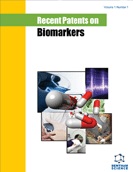Abstract
Viruses lack the synthetic machinery, so they hijack the synthetic machinery of host cells to produce proteins; and in this process trigger cancer. Since current therapies are ineffective in dealing with virally induced cancers, a future goal could be to develop vaccines against these tumor viruses. Indeed, a recent patent has demonstrated the utility of host p16 peptide fragments to vaccinate against various HPV induced tumors like penile, anal, cervical, vulvar, vaginal and head and neck cancers. Another patent describes the use of host cell peptide fragments (Rb, Mupp, DLG1 and AP) expressed on surface of virally infected host for vaccinating against the various HPV induced cancers including head and neck cancers. A vaccine has been prepared from peptide antigens derived from HPV L2, to vaccinate against diverse strains of HPV. An HPV assay (RNAscope®) has been recently developed utilizing E6/E7 mRNA to detect high-risk HPV subtypes in head and neck cancer. Another patent deals with the use of two RNAases (ranpirnase and 805 variant of ranpirnase) against HPV infections. We have undertaken this review to summarize and delineate the role of viruses in carcinogenesis in the oral region.
Keywords: Cells, dysplasia, host, lymphocytes, neoplasia, vaccine.
 25
25

